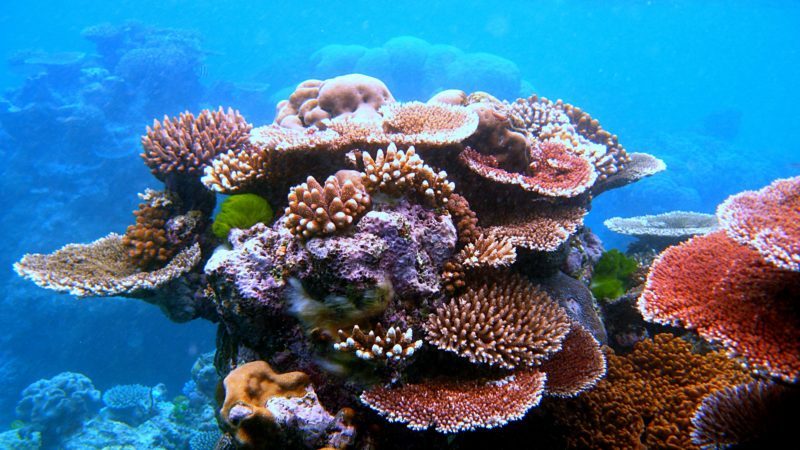The recovery of coral genetic diversity in the Sunda Strait following the 1883 eruption of Krakatau
Published Work | 2010 | Coral Reefs 29(3), 547–565
permalink
Research Project | 2016
Region: Seas of the Coral Triangle (a region comprised of the Philippines, Malaysia, Indonesia, East Timor, Papua New Guinea, and the Solomon Islands)
Paul Barber is an affiliated faculty member of CTR who is conducting research on evolution of conservation of marine biodiversity, coral reefs, evolutionary and population genetics, and natural selection and adaptation. The Barber Lab integrates genetics, ecology, oceanography and geology to understand the processes that promote speciation in marine environments, creating marine biodiversity hotspots. For the past decade, the lab has focused on the fish and invertebrates of the coral reefs of the Coral Triangle, the global epicenter of marine biodiversity. Through a comparative approach, the Barber Lab is examining the relative importance of tectonic history, physical oceanography, and organismal ecologies in limiting genetic connectivity and promoting evolution and lineage diversification. Recent work focuses on integrating empirical models of connectivity with predictions from geographically explicit models of contemporary and historical ocean currents. The Barber Lab is also investigating the role of natural selection and adaptation in shaping population genetic patterns, particularly the role of the genetic basis of energetic performance of mitochondrial in size selective mortality of marine larvae.
Related Publications
Published Work | 2010 | Coral Reefs 29(3), 547–565
permalinkPublished Work | 2009 | Heredity 104(6), 563–572
permalinkPublished Work | 2009 | Molecular Phyologenetics and Evolution 53(1), 335–339
permalinkPublished Work | 2009 | Biogeography 36(10), 1845–1846
permalinkPublished Work | 2008 | Biology Letters 4(6), 696–699
permalinkPublished Work | 2008 | Molecular Ecology 17(24), 5276–5290
permalinkPublished Work | 2008 | Harmful Algae 7(5), 614–629
permalinkPublished Work | 2008 | Conservation Genetics 10, 803–814
permalinkPublished Work | 2008 | Conservation Biology 22(5), 1255–1266.
permalinkPublished Work | 2008 | nternational Journal of Ichthyology 14(3), 129–140
permalinkPublished Work | 2008 | Conservation Biology 22, 965–975
permalinkPublished Work | 2008 | Molecular Ecology 17(2), 611–626
permalinkPublished Work | 2007 | Ecology 88(5), 1263–1277
permalinkPublished Work | 2007 | Oceanography 20(3), 22–31
permalinkPublished Work | 2006 | Science 314(5804), 1388–1389
permalinkPublished Work | 2006 | Evolution 60(9), 1825–1839
permalinkPublished Work | 2006 | Proceedings of the Royal Society of London, Series B 273(1597), 2053–2061
permalinkPublished Work | 2006 | Marine Biology 150, 213–220
permalinkPublished Work | 2005 | Molecular Ecology Notes 5(4), 834–836
permalinkPublished Work | 2005 | Proceedings of the Royal Society of London, Series B 272(1569), 1209–1216
permalinkPublished Work | 2005 | Molecular Ecology Notes 5(3), 688–691
permalinkPublished Work | 2005 | Molecular Phylogenetics and Evolution 35(1), 235–253
permalinkPublished Work | 2002 | Proceedings of the Royal Society of London, Series B 2002, 269, 1591–1597
permalinkPublished Work | 2002 | Journal of Crustacean Biology 20(2), 20–36
permalinkPublished Work | 2002 | Molecular Ecology 11(4), 659–674
permalinkPublished Work | 2000 | Proceedings 9th International Coral Reef Symposium, Bali, Indonesia, 185–192
download pdf permalinkPublished Work | 1999 | Molecular Ecology 8(4), 563–576
permalinkPublished Work | 1999 | Molecular Ecology 8(4), 547–562
permalink